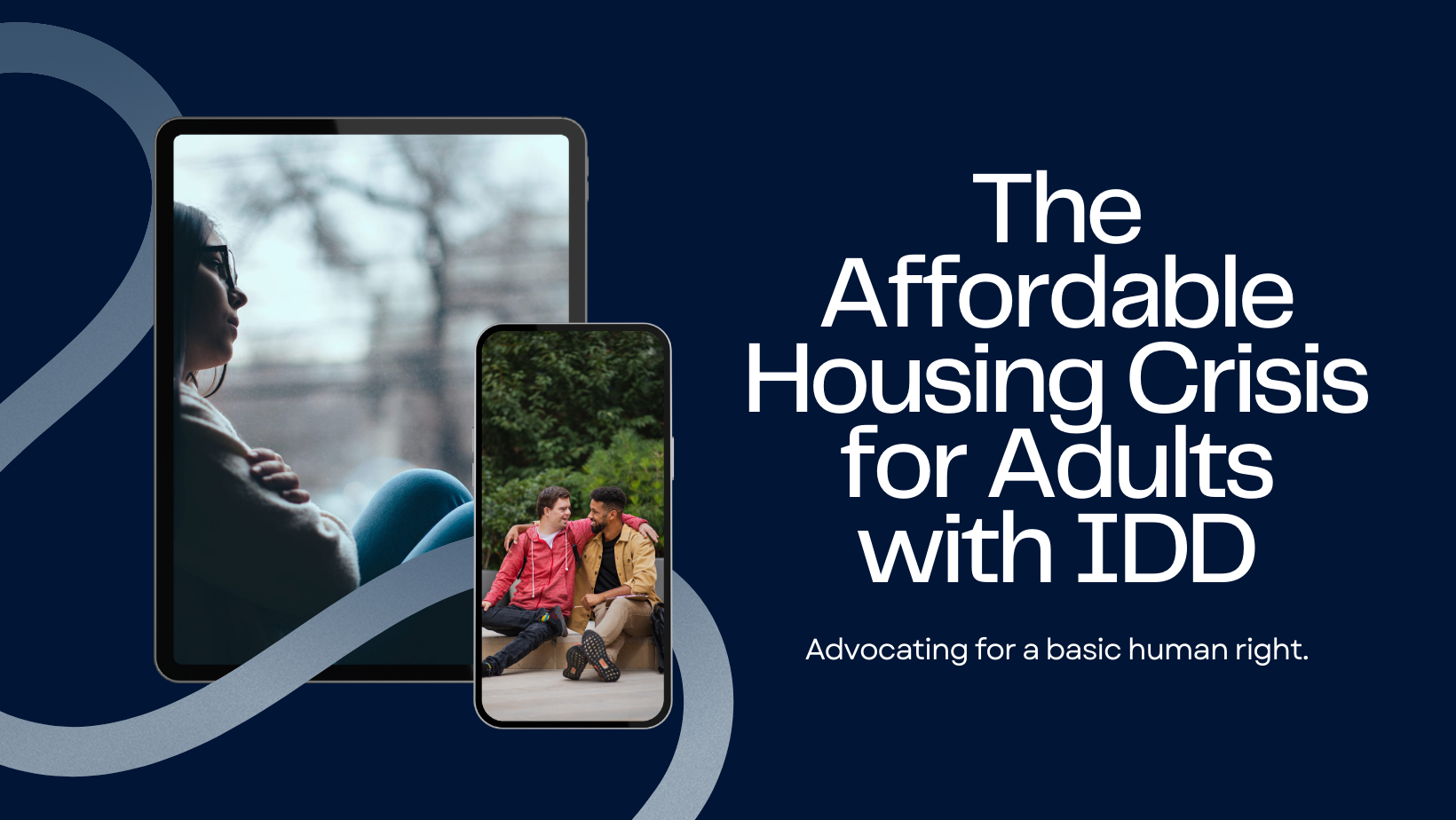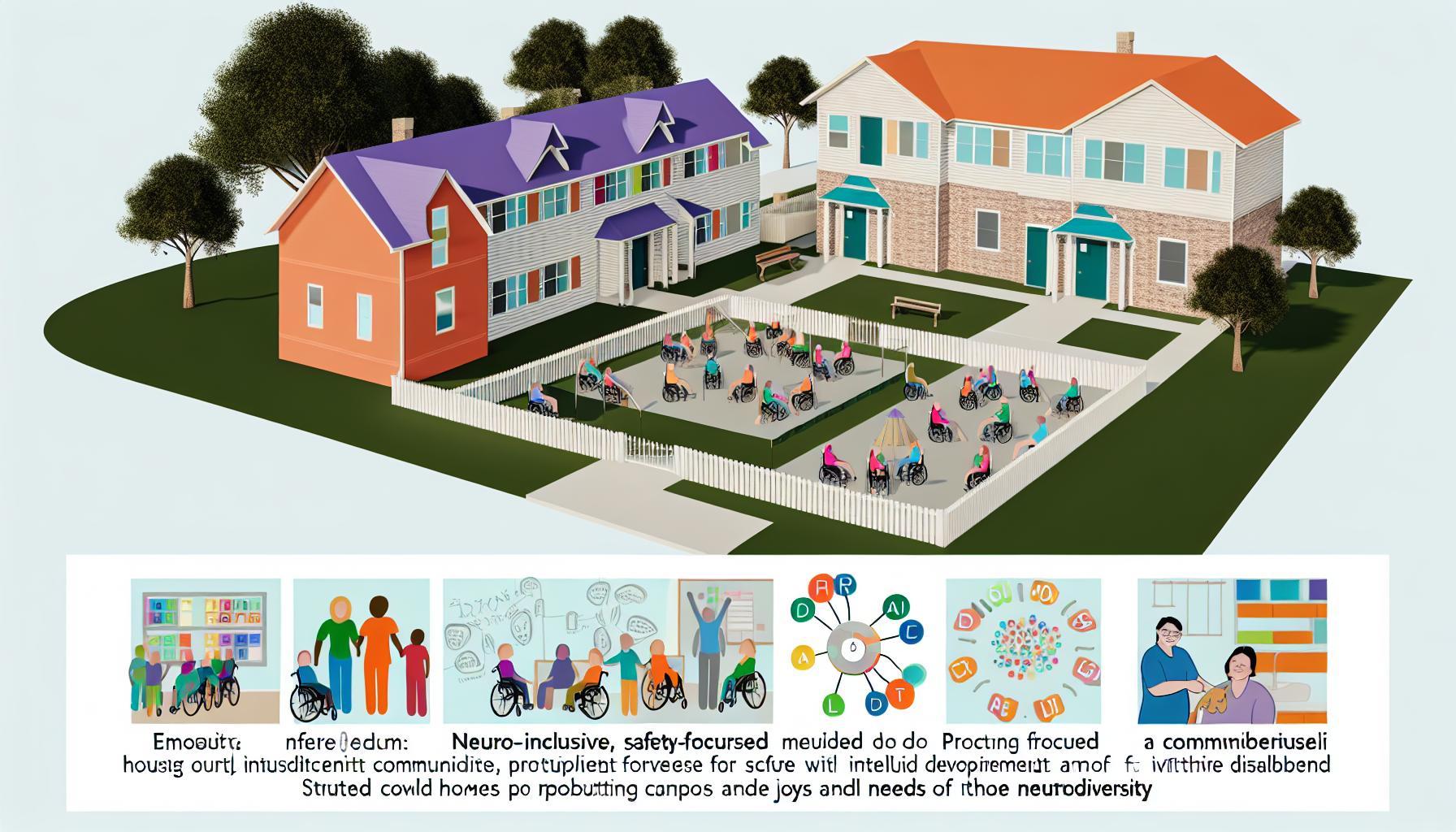Helping Your IDD Child Achieve Homeownership: The Family Opportunity Mortgage
For parents of a child with autism, Down syndrome, or other intellectual or developmental disabilities (collectively referred to as IDD), ensuring their loved one has a safe, comfortable, and accessible home is a top priority. However, financial challenges can make this goal seem out of reach, especially if your child is unable to work or lacks sufficient income to qualify for a traditional mortgage. The Family Opportunity Mortgage offers a powerful solution, allowing parents to purchase a home for their child with IDD under favorable loan terms typically reserved for primary residences. Here’s a closer look at how this mortgage works, its benefits, eligibility requirements, and why it’s a game-changer for families.
What Is a Family Opportunity Mortgage?
A Family Opportunity Mortgage is a conventional loan backed by Fannie Mae or Freddie Mac with expanded guidelines that allow parents to buy a home for their disabled adult child (or for elderly parents) without classifying it as a second home or investment property. This unique program treats the home as an owner-occupied residence, even though the borrower (the parent) does not live there. For families with a child with autism, Down syndrome, or other IDD, this means you can secure a home tailored to your child’s needs with lower interest rates and more flexible financing options than traditional second-home loans.
How Does It Work?
The process of obtaining a Family Opportunity Mortgage mirrors that of a standard conventional mortgage, but with specific considerations for families supporting a child with autism, Down syndrome, or other IDD:
-
Find an Eligible Property: Work with your child to select a single-family home or condominium that meets their needs and complies with Fannie Mae or Freddie Mac guidelines. The property must be the primary residence of your child and should not have been owned by them in the last three years. Accessibility features, such as ramps or wider doorways, can often be incorporated or added to support conditions like autism or Down syndrome.
-
Get Pre-Approved: Contact lenders familiar with the Family Opportunity Mortgage to get pre-approved. This step helps you understand your budget and compare loan terms. Be sure to specify that the home is for your child with IDD, such as autism or Down syndrome, to ensure the loan is processed as an owner-occupied mortgage.
-
Apply for the Mortgage: Submit a mortgage application, providing details about your income, credit, and any existing mortgages. You’ll also need documentation proving your child’s inability to qualify for a mortgage independently, such as a doctor’s note describing their disability (e.g., autism, Down syndrome, or another developmental disability) and stating they cannot work full-time or require ongoing care.
-
Complete Underwriting: The lender will verify your financial stability and the property’s eligibility. Promptly provide any additional documents requested to streamline this process.
-
Close the Loan: Once approved, finalize the paperwork, make the down payment (as low as 5%), and cover closing costs. The home will be titled in your name, though your child will live there as the primary occupant.
Benefits for Parents of Children with Autism, Down Syndrome, or Other IDD
The Family Opportunity Mortgage offers significant advantages that make homeownership more accessible and affordable for families:
-
Lower Interest Rates: Unlike second homes or investment properties, which often carry higher rates, Family Opportunity Mortgages offer competitive rates similar to those for owner-occupied homes, reducing long-term costs.
-
Low Down Payment: You may qualify with a down payment as low as 5%, compared to the 20% or more typically required for non-owner-occupied properties. This lower barrier makes it easier to secure a home for your child.
-
Flexible Financing Options: Lenders may allow you to customize loan terms, such as adjusting the loan length to achieve an affordable monthly payment, tailored to your financial situation.
-
No Occupancy Requirements for the Borrower: You, as the parent, do not need to live in the home, allowing you to maintain your primary residence while providing a dedicated space for your child.
-
Potential Tax Benefits: If you itemize deductions, you may be able to deduct property taxes paid on the home. Additionally, the property may qualify for a homestead exemption, reducing property taxes, even if you don’t live there. Consult a tax professional to explore these possibilities.
-
Support for Independent Living: For a child with autism, Down syndrome, or other IDD, owning a home can foster greater independence and stability compared to renting or living in assisted facilities. The mortgage can also fund accessibility upgrades, such as sensory-friendly spaces for autism or modified bathrooms for Down syndrome, to enhance their quality of life.
Eligibility Requirements
To qualify for a Family Opportunity Mortgage, both the borrower (the parent) and the property must meet specific criteria:
-
Borrower Eligibility:
-
Be the parent or legal guardian of an adult child with autism, Down syndrome, or another IDD who is unable to work or lacks sufficient income to qualify for a mortgage independently.
-
Have a minimum credit score of 620 (higher scores may secure better terms).
-
Maintain a debt-to-income (DTI) ratio of 45% or less, though some lenders may allow up to 50% with compensating factors.
-
Demonstrate sufficient income to cover your existing expenses and the new mortgage.
-
Provide a doctor’s note confirming your child’s disability, stating they cannot work full-time and require ongoing care for at least six months.
-
-
Property Eligibility:
-
The home must be a single-family residence or an eligible condominium (agricultural or commercial properties, like bed and breakfasts, are not allowed).
-
It must serve as the primary residence of your child with autism, Down syndrome, or other IDD.
-
The property must meet Fannie Mae or Freddie Mac standards for safety and structural integrity.
-
-
Additional Documentation:
-
A written statement outlining your intent to purchase the home for your child.
-
Proof of your relationship to your child (e.g., birth certificate).
-
Documentation, such as pay stubs or Social Security award letters, showing your child’s limited income.
-
Why It’s a Game-Changer for Families
For parents of a child with autism, Down syndrome, or other IDD, the Family Opportunity Mortgage addresses a critical need: providing a stable, accessible home without the prohibitive costs of second-home financing. Traditional mortgage options often require higher down payments and interest rates, which can strain family budgets. This program levels the playing field by offering owner-occupied loan benefits, making it easier to create a supportive living environment for your child. Additionally, the ability to finance accessibility modifications ensures the home meets your child’s unique needs, promoting independence and comfort.
Alternatives to Consider
If the Family Opportunity Mortgage isn’t the right fit, other options may help:
-
FHA Loans: These loans have lower credit requirements and down payments as low as 3.5%, though they require mortgage insurance premiums regardless of equity.
-
Co-Signing a Mortgage: If your child has some income (e.g., from disability benefits), you could co-sign a conventional mortgage to help them qualify.
-
Assisted Living Facilities: While more expensive (averaging $4,500/month in the U.S.), these facilities provide care and support for individuals with autism, Down syndrome, or other IDD, though they may not offer the independence of homeownership.
-
Local Homeownership Programs: Check the U.S. Department of Housing and Urban Development (HUD) website for down payment assistance or low-income housing programs in your area.
Conclusion
The Family Opportunity Mortgage is a lifeline for parents seeking to provide their child with autism, Down syndrome, or other IDD a safe, accessible, and independent home. By offering lower interest rates, minimal down payments, and flexible terms, this program makes homeownership achievable without the financial burdens of second-home loans. If you’re ready to explore this option, contact a lender experienced with Family Opportunity Mortgages to discuss your eligibility and start the journey toward securing a home for your child. With the right support, you can create a stable, nurturing environment that enhances your child’s quality of life.
Disclaimer: This article provides general information and is not intended as legal or tax advice. Consult a mortgage professional, tax advisor, or attorney for personalized guidance.



